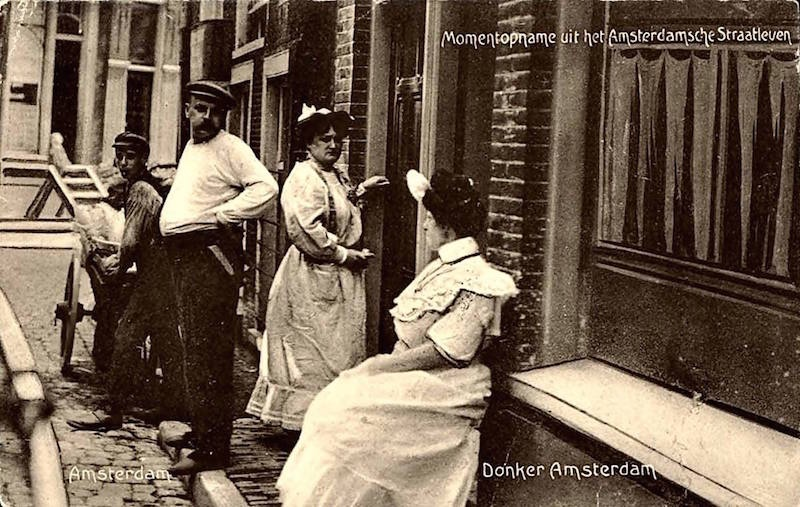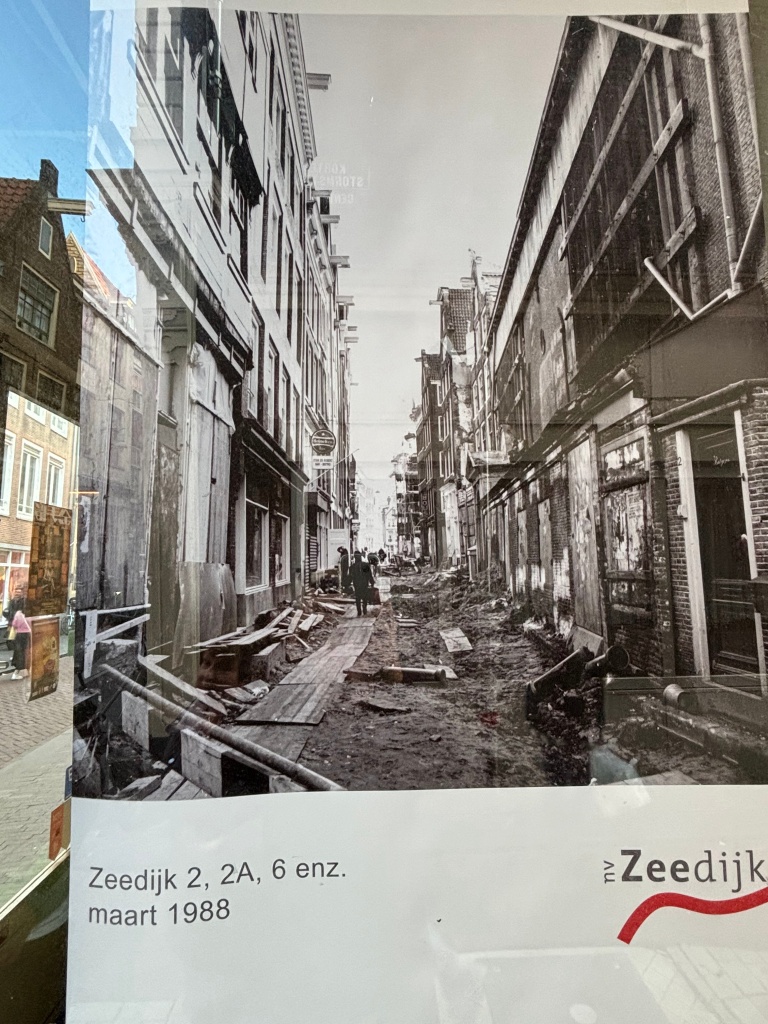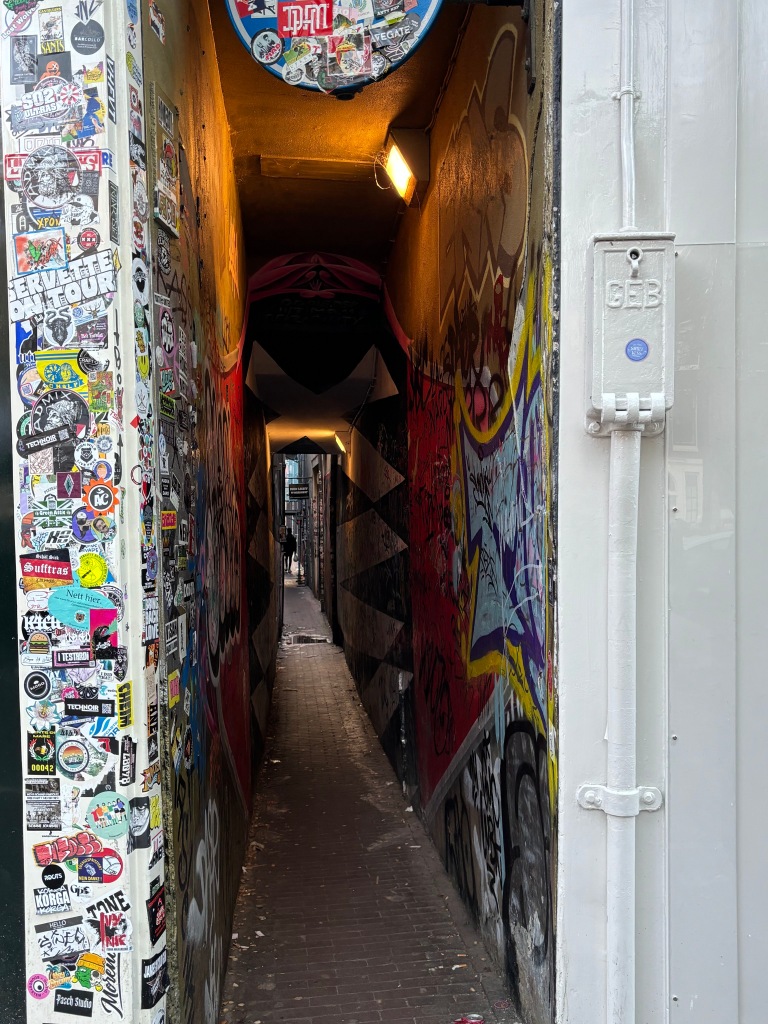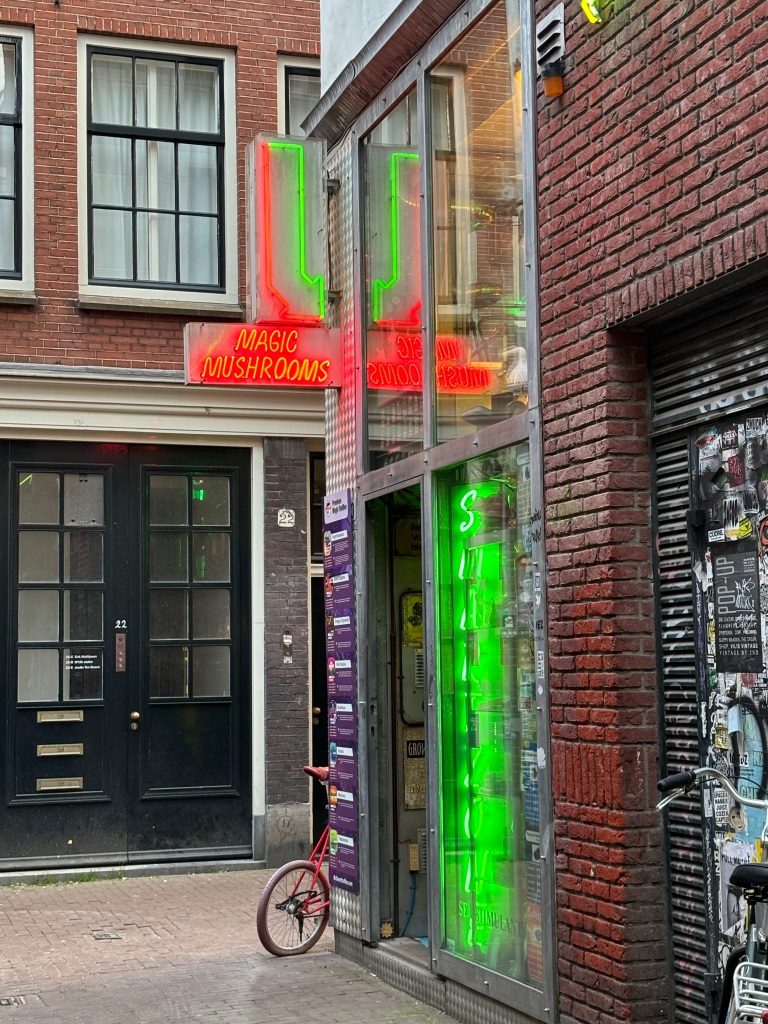May 7, 2024
A visit to Amsterdam wouldn’t be complete without a visit to the Red Light
District…but that may not be true for much longer. The Red Light District we visited is much smaller than the one someone may have visited even 10 years ago and if the new mayor has her way it could become non-existent in the next few years. But more on that later. First, a little history.
The Red Light District has been around as long as Amsterdam has been around. It has had a bit of an on-again, off-again relationship with the law. Here’s how one website describes it’s early years…
The rise of Amsterdam to world prominence was fueled by trade. Trade that would have passed through the oldest part of the city, its harbor.
What’s a returning sailor to do with a fist full of cash and an itch for female companionship after months at sea with only men?
Get drunk and get laid.
I couldn’t have said it better myself! 😂
But in the 1400s owners of brothels were to be buried alive – it was codified in Dutch law. In the 16th century, women accused of prostitution would have their ears cut off, then be jailed and be put on public display while doing their prison work – usually sewing – so that they could be publicly humiliated by passersby. Prostitution was again decriminalized in the 18th century. Even though the girls would not be arrested, they were still looked down upon and their lives were difficult. There were no protections against unwanted pregnancy or STDs, and no cure when they did contract an STD. Until an unlikely hero appeared on the scene – Napolean!
Napolean had an Army to protect. It was hard enough to keep them safe against the weather or enemy troops. Keeping them away from the women wasn’t likely to happen. Instead, he mandated that prostitutes check in with the police twice a week for medical exams. If they were ill or symptomatic they received free medical care and were prohibited from returning to work until they were deemed well.
Sometime after the Napolean era the Netherlands again became a protestant country and less tolerant of prostitution. Religious advocates would walk through the streets where the prostitutes operated, singing hymns and quoting the Bible in an effort to save them from themselves. It became such an issue authorities made it illegal for prostitutes to stand in doorways to “advertise” – but nothing kept them from standing in the windows…😊
This picture was obviously taken before then. It’s a 1905 photo of prostitutes and their pimp. Not quite what you were expecting?

Most recently prostitution was legalized in 1999 and recognized as a legitimate profession. However, it is still not without its critics. In 2007 the city restricted the area in which the women can operate, closing 127 windows. Today there are 300 operational windows and 350 registered sex workers, down from more than an estimated 1,000 in the 70s.
A lot more than the numbers have changed since the ’70s. For a long period of time the area was greatly neglected and a haven for drugs and illegal activities. The pictures below demonstrate that it was not a fun place to be. The photo was published in 1988, but supposedly was taken in the ’70s.

In the 1980s a couple of businessmen came in and started buying up the dilapadated old buildings and cleaning the place up. They renovated the buildings and sold them to legitimate small businesses they believed had something of value to offer the community – products or services that would attract a more….”desirable” element to the community. Their work continues today.
There was a time when organized crime was a big part of the Red Light District (maybe during that sketchy 70’s era?), but we’re told that is no longer true. Individuals or businesses own the rooms in which the women work. The women pay a set fee for each “shift,” paying a higher fee for the nighttime hours when business tends to be more brisk. The “landlord” receives a flat fee at the beginning of a worker’s shift, wages are subject to tax, and the women do have to pay for their healthcare, etc. just like anyone else. Each day when the worker comes to pay her rent, she is checked out to be sure she is healthy, free of any marks that may suggest abuse, and not under the influence. If a landlord suspects abuse, they are to required to report it to the authorities; if they believe the woman is under the influence they are prohibited from renting to her. Each room has a very visible emergency button next to the bed. If things start to get out of hand, the worker pushes the button and help arrives.
We weren’t allowed to take pictures of the women themselves, but we did see them, and we witnessed the negotiations that take place when a customer presents his or herself. In case you’re wondering, the workers in the Red Light District are amost always female, and they are clothed in the windows – maybe not a LOT of clothes, but they are clothed.
Here you see the entrance to the Red Light District and some of the windows that were not in use during our visit. I don’t know if you can tell, but the rooms are in the middle of a normal, everyday neighborhood. On one street there are a number of sex windows and three doors down there’s a very active daycare center. Some of the streets are also located along the canal, so I bet quite a few of those 400 wild pee-ers we heard about earlier today get fished out in this area.



This is one of the original alleyways to enter the District, and is still in use today. There was some questionable activities happening while we were there, so we did not walk down it.


The Red Light District is also home to the first coffee shop to legally sell drugs. This is that coffee shop.

Some will tell you that the church in the Red Light District was built specifically for visiting sailors to immediately go and confess their sins after visiting one of the women. It may be true that some of them did do this, but the church was actually built in 1300 and is the oldest building in Amsterdam. Back in the day the church was considered the most important building in the town and would be the first thing to be built. It was the center of medieval life, where parties and weddings were held, where people prayed and where they mourned. It was also where people were buried. This one has more than 10,000 corpses under its ground floor.

The future of legalized prostitution in Amsterdam is uncertain. Although the number of registered sex workers is small, there is a large “underground” trade estimated to involve a thousand or more individuals who do not register or get regular medical checkups. The Netherlands is one of the top 5 countries in the world for human trafficking and while this issue may not affect the legitimate workers it certainly feeds the illegitimate side of things.
At the very least the mayor would like to relocate the District somewhere else, and possibly close it to tourist. There is concern that its reputation attracts the wrong kind of tourist and adversely affects other individuals and businesses in the area. Plus there’s the matter of respecting the workers themselves; they don’t all appreciate being treated like zoo exhibits.
How did the District get its name? I’ve found two explanations – maybe both are true?
First, 19th Century railroad workers would leave red lanterns outside the doors of the women they visited to help them find their way back to the trains afterward. The collective red glow of the lanterns on busy nights led to the name.
Second, and probably the most common, is an old wife’s tale that red lights hide the physical markers of an STD. According to one medical site I saw this is not true. Nor is it true that the red lights prevent or heal STDs, another common misconception. Who knew?
For those of you who may have heard of the Blue Light District, it does exist, but it is not usually included in the tours. This is where transgender individuals work.
We were there from 7:00-9:00 p.m. Here’s what it looks like a little later in the evening, when things get dark…



